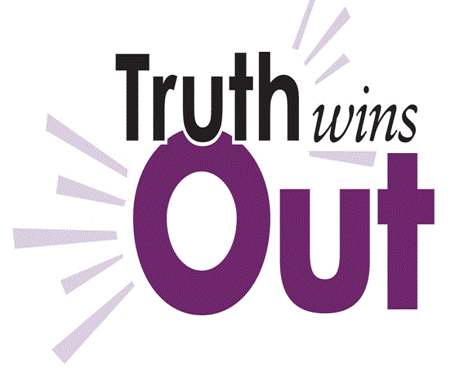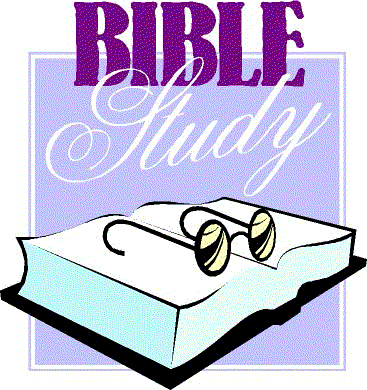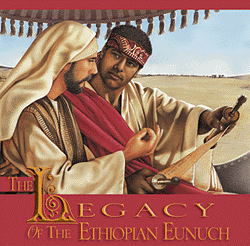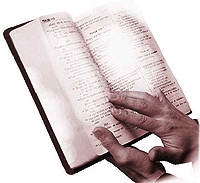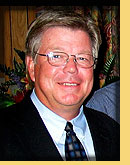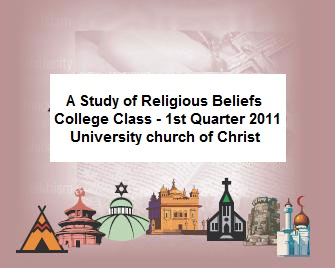Home | About Us | Directions | Bulletins | Sermons & Audio | Cross Of Christ Studies | Classes | Student and Parent Resource Page | Dangers Facing the "Non-Traditional"
Neo-Evangelicals: Shift Towards Modernism
by Steve Wolfgang
The frustration of wrestling with and writing this article has been intense. Although I agreed when asked as a staff member to submit an article on this topic, I knew from the beginning that it would be impossible to include everything which should be said within the allotted space limitations. There has simply been so much written within the last five years along regarding this subject that one could not begin to discuss it fully in yet one more book let along a short article. I have therefore found it necessary to simply provide a thumb-nail sketch of the major outlines of the recent controversy, and by the use of footnotes (1) document other sources to which one may turn if one wishes to explore this controversy further. One who wishes only to have an introduction to the subject may simply read through the body of the article and ignore the footnotes; others may wish to pursue this study further, in which case I have attempted to provide references to the bulk of the most recent material. I do not labor under the delusion that everyone should be interested in such matters or that everyone wants to (or should want to) spend much time reading “evangelical” literature. To be quite honest, I do not read every chapter of every book nor every article in every paper which crosses my desk (though I try to keep up fairly well, since I serve on the staff, with what is written in Truth Magazine). I simply know of no better (in fact, I know of no other) way to approach a subject about which so much has been written so recently without surveying the literature on the subject.
First, a definition of terms is in order. What is meant by “modernism” and by “neo-evangelical”? There have been numerous definitions proposed for each term and perhaps the best way to approach these terms is through a historical survey. The term “modernism” has many definitions outside the realm of religion (2) but within religious circles referred technically to a movement within Catholicism in the late nineteenth and early twentieth centuries. (3) Historians have quibbled about the exact features of the movement as it expanded, but gradually it came to refer to a general attitude toward the world and the Bible itself, whether held by Catholics, Protestants, atheists, humanists, or others. “Modernists” (4) or “liberals” generally came to be identified as those whose view of the Bible and its relationship to the twentieth-century world allowed for “errors” (as they defined them) in the Scriptures. These included not only errors of “fact” pertaining to geography, history, mathematics, scientific knowledge, etc., but to what these individuals perceived as an outdated and fundamentally mistaken view of human nature and the whole philosophy of human existence. This view point usually included favorable reception of the “higher criticism” of the Bible, and acceptance of biological evolutionary theories in one form or another (sometimes adapted as “theistic” evolution), a less than rigid view of morality, and often a “social gospel” type orientation in religious activities and structures. During the late nineteenth and early twentieth century, a group of individuals who came to be known as “Fundamentalists” became quite vocal in their opposition to the “modernists”; perhaps the most widely publicized encounter between the two groups occurred in the Scopes Trial at Dayton, Tennessee, in 1925, basically involving the evolution issue but with references to other questions as well. (5) Both before and after this most visible representation of the conflict, innumerable smaller and less publicized battles occurred, and many denominations (along with their headquarters, seminaries, mission boards, and para-church organizations) ruptured, resulting in the formation of many new churches, seminaries, mission boards, etc. Despite a smattering of~educated leaders (the best known of which was probably J. Gresham Machen, who left Princeton Theological Seminary and, with a handful of others retreated to Philadelphia to found Westminister Theological Seminary), Fundamentalists were often caricatured as ignorant, uncultured, anti-intellectual bigots (not altogether without basis in fact).
By the 1940′s however, a new generation of young people raised in Fundamentalist churches began to emerge, particularly in the wake of World War 11, unsatisfied with what they considered to be the narrow emphasis of the “Fundamentalists” but unwilling to accept most of the more liberal or critical views espoused by “Modernists.” Generally accepting the label “Evangelicals” or “Neoevangelicals,” and led by a corps of bright young students and professors with graduate degrees from some of the better or more prestigious universities in this country and abroad, significant numbers of “laymen” coalesced around various institutions which came to represent the “evangelical” cause. (6) Carl F. H. Henry’s critique, The Uneasy Conscience of Modern Fundamentalism, appeared in 1947, the same year in which Fuller Theological Seminary was founded. Fuller had on its faculty in the early years men whose names came to be synonymous for “evangelicalism:” Henry Harold Lindsell, Everett F. Harrison, Gleason L. Archer, Edward John Carnell, Geoffrey W. Bormiley, George Eldon Ladd, and others. (7) Two years following, the Evangelical Theological Society was formed to provide a forum for expression of a more conservative viewpoint than often found in major seminaries. That same year, 1949, also saw the beginning of the Billy Graham evangelistic crusades, which came to represent on a popular level a general expression of conservative evangelicalism. By 1956, the fortnightly periodical Christianity Today (8) was founded to provide an alternative forum for the expression of views unacceptable in more liberal publications such as The Christian Century (founded and edited at first, interestingly enough, by a former member of the Disciples of Christ, Charles Clayton Morrison). James DeForest Murch, a prominent individual among the “independant” Christian Churches (the North American Christian Convention, and their seminary, Cincinnati Bible [now Christian] Seminary), also maintained high visibility among the evangelical movement. (9)
By the 1960′s several books (10) could describe a rather strong and well-defined movement with a basically conservative theology centered around belief in the miraculous (usually, but not always emphasizing items such as the virgin birth of Christ, the historical nature of His ministry and miracles, and especially of His resurrection), and usually a heavy emphasis on the premillennial concept of fulfilled (or, more correctly, unfulfilled) prophecy. Time Magazine could observe in 1969 that these loosely affiliated but fast growing religious bodies (which they listed as including, interestingly enough, Churches of Christ in addition to the Southern Baptist Convention, the Lutheran Church-Missouri Synod, and other bodies ranging from Pentecostal/holiness/Wesleyan type groups to more sophisticate “mainline” denominations) constituted “a significant majority among 67 U.S. Protestants.” (11)
But there were cracks beginning to develop in the evangelical facade. By the early 1970′s, while evangelical authors such as Bernard Ramm and Donald Bloesch could write regarding a somewhat more solidified and sophisticated evangelical “theology,” (12) they (along with other prominent evangelicals) were felt by some others in the movement to have acquiesced to a modernism at certain points. In 1976, both of the first two editors of Christianity Today (Henry and Lindsell) were writing both in that periodical and in published works about “cracks in the evangelical foundations” and the evangelicals’ “search for identity” at the “brink of crisis.” (13) Henry concerned himself to a large extent with a yet newer generation of evangelicals, having grown up in the post-World War II evangelical churches, or having been converted in innumerable evangelical campaigns conducted by Graham, Bill Bright, and others in cities and on campuses. This generation partook of the revolutionary spirit characteristic of the 1960′s, and bemoaned what they considered to be a lack of social conscience among evangelicals. (14)Many evangelicals, such as Henry, agreed that there was some truth to the charge, but cautioned the younger generation against merely clothing modified Marxist political ideology in the language of evangelical religion. However, more to the point of this article, it is interesting to notice that Henry also looked askance at his fellow editor Lindsell’s efforts to ferret out those with modernistic tendencies among various evangelicals. (15)
Perhaps of all the works mentioned in this article, Truth Magazine readers may be most familiar with Lindsell’s book, The Battle For the Bible, published in 1976. (16) In it, Lindsell identifies and attempts to document various instances of a shift in the direction of modernism among post-World War 11 evangelicals. Devoting chapters to the Southern Baptist Convention and the Missouri Synod Lutherans and their recent split (along with the much publicized defection of many of the faculty of their St. Louis seminary, Concordia, to form a “Seminary in Exile” [Semines]), he then considers the shift in doctrinal requirements at Fuller Seminary. Fuller (where Lindsell taught for more than a decade) was begun as the “flagship” of evangelical seminaries, and at first required that a doctrinal statement be signed every year by each faculty member avowing belief in the inspiration and inerrancy of the Bible. This is no longer required, and over the past fifteen years inner controversies over such a statement have caused several faculty members to leave Fuller.
Truth Magazine readers interested in evaluating the details and documentation of these charges will have to read the book for themselves. It would be impossible to cover them in an article of this length. (I am sure Truth Magazine Bookstore would be delighted to supply you with copies of this or any other book I have referred to in this article!) It is worthy of notice however, that a Fuller professor, Jack Rogers, immediately edited a collection of essays (17) aimed at responding to Lindsell, written by some stellar members of the evangelical community (including some, like Clark Pinnock, and Bernard Ramm, whose writings are fairly well-known among many preachers in the Lord’s church, particularly among younger preachers). In my opinion, this book simply proves, better than Lindsell could document, the degree to which evangelical thinking has shifted on the question of inspiration and inerrancy.
The most recent addition to the burgeoning list of books on the subject is James Bar’s work on Fundamentalism. ” Barr, a British liberal theologian (by no means an evangelical), actually has misdefined his work since most of it deals not with historic fundamentalism but more recent writings of the “neo-evangelicals.” Some of the quotations he chooses to illustrate his points are taken from “evangelical” works and will be eye-opening, I believe, to anyone who has not read what some evangelical writers have been saying in the last decade or so.
It would be worthwhile to explore the relationship of the evangelical movement (and the books, commentaries, magazines, etc. which it has spawned) to the Churches of Christ; its influence has been very great in many places, I am convinced. I hope to be able in the near future to explore in greater detail some of the issues in the Fundamentalist-Modernist and “evangelical-liberal” controversies, reviewing the attendant literature. Personally, I believe much of the grace-fellowship controversy over doctrines such as imputed righteousness (a doctrine central to Reformation theology and thus to the evangelicals, who style themselves the true spiritual heirs of the Reformation) has received impetus from a good many preachers in the Lord’s church (particularly younger men) becoming overly familiar with and impressed and influenced by the reading of such material. In the same way, I think it could be demonstrated that much of the premillennial controversy in the church from 1915-1935 came about as the result of the brethren’s exposure to the Fundamentalist literature. But that is another article (or series)!
Truth Magazine - November 2, 1978
1. Yes, I am going to resort to the use of footnotes! I am cognizant of the fact that some do not like footnotes, and others think they are out of place in a paper such as Truth Magazine. Normally 1 share this feeling but in an article of this nature it is simply impossible to do justice to the subject in such a brief space without referring the interested reader to other material. Those not interested in pursuing the subject may ignore the numbers and skip the clutter at the end. I simply see no other solution!
2. See “Modernism” in The Encyclopedia of the Social Sciences,” Edwin R.A. Seligman, ed
Vol. 10 (Macmillan, 1933), p. 564ff.
3. See the entries under “modernism” in standard reference works such as the Westminster series, A Dictionary of Christian Theology, ed. Alan Richardson, (Westminster, 1969), p. 221 ff., or The Westminster Dictionary of Church History ed. Jerald C. Brauer, (Westminster, 1971), p. 561.
4. These dictionaries discuss under “liberalism” the ideas generally associated with “modernism” in this article (see pp. 191 ff. & 496ff, respectively). For an evangelical perspective on these definitions and concepts, see entries under “Modernism in The New International Dictionary of the Christian Church, ed. 1. D. Douglas (Zondervan, 1974), and under “Liberalism” in The Wycliffe Bible Encyclopedia, ed. Charles F. Pfeiffer, Howard F. Vos, and John Rea, Vol. II (Moody Press, 1975), p. 1033f.
5. Two older works (Stewart G. Cole, History of Fundamentalism, Smith, 1931, and Norman Furniss, The Fundamentalist-Modernist Controversy, Yale, 1954) have been long considered the “standard” works on the subject. A flood of recent books have appeared in the last decade, the most useful of which are the following. W illard B. Gatewood, Controversy in the Twenties (Vanderbilt, 1969) is an excellent anthology of primary source documents with good short introductions. Gatewood was a colleague of Ed Harrell at the University of Georgia while preparing this work. Ernest R. Sandeen, The Roots of Fundamentalism (Chicago, 1970) demonstrates the close relationship of millennial thought and the Fundamentalists. George W. Dollar, A History of Fundamentalism in America (Bob Jones, 1973) is totally biased in favor of the Fundamentalists (as other earlier works are often totally biased against them) but is indispensable as a handbook to sort out all of the Fundamentalist figures and institutions, in addition to being interesting reading regarding some “inside” details not found in other works. Finally, C. Allyn Russell’s anthology, Voices ofAmerican Fundamentalism (Westminster, 1976), is a biographical study of seven leaders in the movement, including J. G. Machen, J. Frank Norris, and William Jennings Bryan. An “evangelical” publication, the Christian Scholars Review, has within the last several years contained a running commentary on the subject of Fundamentalism between Sandeen, George Marsden and others which is quite revealing.
6. The best introduction I have seen yet to the confusing welter of persons, papers, and institutions flying under the evangelical “flag” is Richard Quebedeaux’s recent book, The Worldly Evangelicals (Harper and Row, 1978). For one who has no knowledge of where to begin to sort out the evangelicals, this is as good a place as any. Wuebedeaux’s earlier work, The Young Evangelicals (Harper and Row, 1974) is also good but not so thorough as the later work. If you can get only one book on the evangelicals, this should probably be it.
7. On the formation on Fuller Seminary from an inside view, see Wilbur M. Smith’s memoirs, Before I Forget (Moody Press, 1971), pp. 287-291. A recent book in honor of Smith, edited by the current editor of Christianity Today, Kenneth Kanuer, is Evangelical Roots (Thomas Nelson, 1978).
8. For inside details on the founding of Christianity Today, see Smith’s memoirs, pp. 175-182, and the biography of L. Nelson Bell (Billy Graham’s father-in-law), A Foreign Devil in China (Zondervan, 1971, by John C. Pollack), pp. 237-244. Quebedeaux also has various details from another perspective scattered throughout The Worldly Evangelicals.
9. See Murch, Cooperation Without Compromise: A History of the National Association of Evangelicals (Eerdmans, 1956), and chapters 12, 13, 17, 18, and 21 of his autobiography, Adventuring for Christ in Changing Times (Restoration Press, 1973).
10. See Ronald H. Nash, The New Evangelicalism (Zondervan, 1963); Bruce L. Shelley, Evangelicalism in America (Eerdmans, 1967); and Millard Erickson, The New Evangelical Theology (Revell, 1968).
11. Time Magazine, “U.S. Evangelicals: Moving Again,” (September 19, 1969), pp. 58-60.
12. Ramm, The Evangelical Heritage (Word, 1973), and Bloesch, The Evangelical Renaissance(Eerdmans, 1973). For a good description of the tension of evangelical thought with liberalism up to that time, see Richard J. Coleman, Issues of Theological Warfare: Evangelicals and Liberals (Eerdmans, 1972). Probably the second most useful book in describing the evangelicals (after Quebedeaux’s Worldly Evangelicals, is David F. Wells and John D. Woodbridge, The Evangelicals: What They Believe, Who They Are, Where They Are Changing (revised edition; Baker, 1977; get the revised edition, available in paperback).
13. Henry’s book, Evangelicals in Search of identity, was originally a series of articles in Christianity Today in the spring and summer of 1976, during the period of the publication of Lindsell’s book The Battle for the Bible. At the time, Lindsell was editor of CT. Henry described Lindsell’s book as “theological atom bombing,” stating further that “as many evangelical friends as foes wind up as casualties” (Time Magazine, “Bible Battles,” May 10, 1976, p. 57).
14. Several journals have sprung up among “young evangelicals” which openly espouse severe criticism of the American government’s social programs, military policies, etc. Included among the writers of this almost 1960-ish language are authors such as Daniel Berrigan, all the way to Clark Pinnock, whose works are fairly widely known at least among some younger preachers in the Churches of Christ. The most critical of them is Sojourners (formerly the Post-American – signifying the need in the editors’ minds to move beyond the current American society and values), the Reformed Journal, and perhaps others. A recent book which deals on a tamer level with the “young evangelicals’ search for social consciousness” is Donald W. Dayton, Discovering an Evangelical Heritage (Harper and Row, 1976). See also Robert Webber, Common Roots (Zondervan,1978).
15. Time, May 10, 1976, p. 57.
16. Lindsell’s book was published by Zondervan. For a work along the same lines, see John Warwick Montgomery, ed., Cod’s Inerrant Word (Bethany Fellowship, 1974). Compare Clark Pinnock, A Defense of Biblical lnfallability (Baker, 1973), and Biblical Revelation (Moody, 1971).
17. Jack Rogers, ed. Biblical Authority (Word, 1977). Other recent books written at least in part in answer to Lindsell’s broadside, are Harry R. Boer, Above the Battle? The Bible and Its Critics (Eerdmans, 1976); Stephen T. Davis, The Debate About the Bible: Inerrancy versus Infallibility (Westminster, 1977); and Herman Ridderbos, Studies in Scripture and Its Authority (Eerdmans, 1978). Quebedeaux (Worldly Evangelicals, pp. 85-88) discusses the doctrine of “limited inerrancy” proposed by Fuller Seminary’s David Hubbard, and the flat assertions in Fuller faculty member Paul K. Jewett’s Man as Male and Female that Paul was not inspired in instructions given about women, “in a word, Paul was wrong” (Quebedeaux, p. 88).
James Barr, Fundamentalism (Westminster, 1978). The most recent book I have seen regarding evangelicals is Morris A. Inch, The Evangelical Challenge (Westminster, 1978). However, advertisements in evangelical journals such as Christianity Today and Eternity are advertising even yet more books to be released this fall. Truly Solomon was “write”: of the making of many books there is no end. There is, however, an end to my patience and to this article!
Other Articles
A Change of Attitude
Restricting the Never Bound
The New Testament Pattern of Giving
Two Men Know that They are Saved

